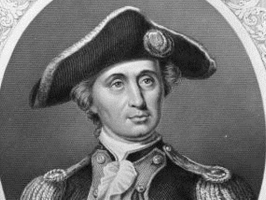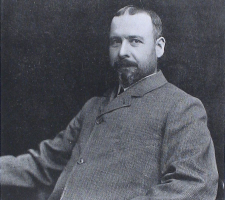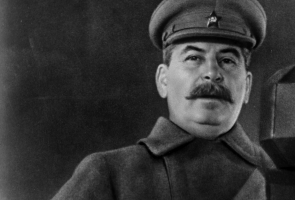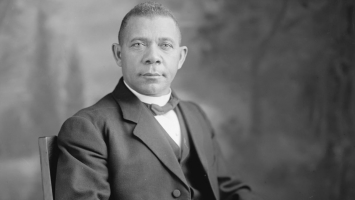Top 6 Interesting Facts About Paul Klee
One of the greatest German artists of all time, Paul Klee is regarded as the most innovative artist of the 20th century. Discover more about this wonderful ... read more...artist's life and work by reading these fascinating facts about Paul Klee.
-
To begin the list of interesting facts about Paul Klee, we want to mention his dream of becoming a musician when he was young. Paul Klee was born on December 18, 1879, in Switzerland. His parents were musicians, both of them. Klee was raised in a creative family, like many well-known great artists. But unlike most of his colleagues, Klee's parents were musically inclined rather than being professionals in painting, drawing, or sculpture. Particularly, his mother was a vocalist, while his father taught music.
At first, Klee did as his parents had done. He picked up a passion for classical music when he was a small child, and some of his favorite pieces were by Johann Sebastian Bach and Wolfgang Amadeus Mozart. He started playing the violin when he was 7 years old, and by the time he was in his 20s, he had spent time as a violinist for the Bern Symphony Orchestra.
Despite being on a promising path, Klee decided to pursue art instead of music around the turn of the century, though music would continue to be a significant inspiration for the majority of his career. These paintings that explicitly allude to music reflect his continuing commitment to his initial craft. For instance, Klee reimagines a musical score as an arrangement of visual symbols like vegetation, a crescent moon, and stars in In the Style of Bach (1919). However, when Klee started looking into color theory, he found that there was a deeper link between the two fields than only the structural similarities.
When he was a teenager, Klee decided against pursuing music as a career because he "didn't find the concept of going in for music creatively particularly interesting in view of the collapse in the history of musical achievement." Instead, he turned to the visual arts.

Photo: Sotheby's 
Photo: Barnebys -
Klee conducted substantial research on the subject of color theory. "Color has taken possession of me; no longer do I have to chase after it, for I know that it has held me permanently," he once said. I am one with color. I am an artist. Klee is now known as the Newton of Color.
Isaac Newton discovered that when it comes to color, the way that paint and light interact is different. Different color results from mixing red and yellow light than from mixing red and yellow paint. Paul Klee was greatly influenced by this revelation. Your brain adjusts by displaying a purple tint when you look away after seeing yellow when staring at a bright light. However, as was already noted, Klee claimed that when it comes to paints, purple and yellow are the most difficult colors to harmonize.
Paul Klee discussed the "tiresomeness" of having "too much white" in a painting in some of his published works. In order to aid painters in using color as successfully as possible, he created a theory of colors. In his writings, Klee discusses the value of utilizing complementary colors to balance one another and the "difficulty" of combining the strong, ferocious tones of yellow and violet. This is due to the fact that, according to Klee, the two most unlike colors in the entire color spectrum are yellow and violet. Klee created a color wheel that can be used as a cross-referencing tool to aid artists in discovering complementary colors. These ideas are presented in Klee's "Pedagogical Sketchbook" work.
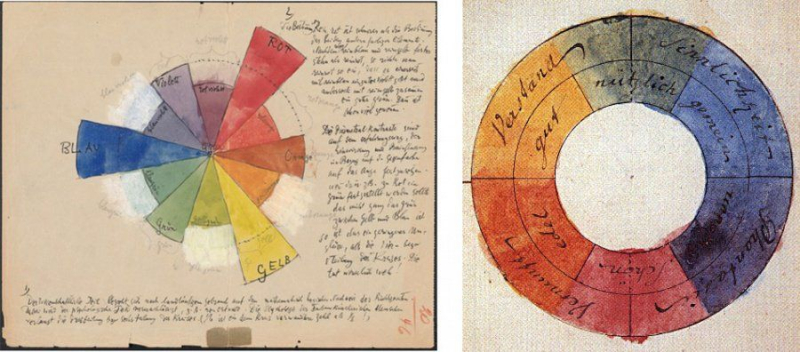
Photo: PInterest 
Photo: Bauhaus Kooperation -
Being a natural draftsman, Klee developed a highly distinctive style once he was able to successfully blend his understanding of color with his draftsmanship skills. The Bavarian Don Giovanni serves as one of the earliest illustrations of this fusion (1919).
Paul Klee was a Swiss artist who participated in the Expressionist, Bauhaus, and Surrealist art movements. His most well-known works frequently depended heavily on his choice of colors. His art was mostly abstract, but because it also had aspects of cubism, surrealism, and children's art, specialists haven't been able to categorize it. Numerous painters of the 20th century, including the New York School, were greatly influenced by Klee's work. His environment and experiences in life informed many of his fundamental beliefs, for example: he was a transcendentalist who believed that there are many realities that human awareness can see, with the material world being just one of them. Klee used color, design, pattern, and small design systems to present his interpretations of that philosophical idea. Paul practiced the violin frequently as a warm-up for painting throughout his life. He made comparisons between the two forms of art, pointing out the temporal character of painting and the fleeting nature of a musical performance, for example. That's about the third interesting fact about Paul Klee.

Photo: Metropolian Museum of Art 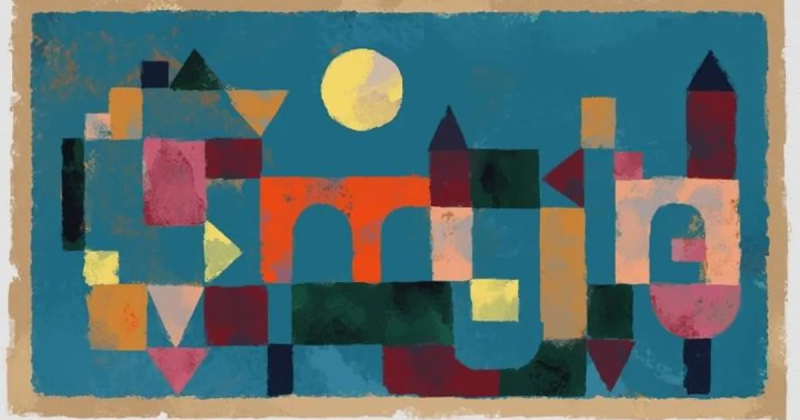
Photo: CNET -
When World War I started, Klee felt aloof from it at first, as he humorously noted, "This war has long been in me. Because of this, internally, I have no concern about it." On March 5, 1916, Klee was enlisted as a Landsturmsoldat (a soldier in Prussia or Imperial Germany's reserve troops). He started to feel the effects of the combat deaths of his pals Franz Marc and August Macke. He drew various pen and ink lithographs on war themes as a way to express his grief, including Death for the Idea (1915). He was assigned as a soldier behind the front once his military training program, which had started on March 11th, 1916, was complete.
On August 20, Klee relocated to Oberschleissheim, where he performed skilled manual labor, such as repairing aircraft camouflage, and accompanied aircraft transporters. He was transferred to the Royal Bavarian Flying School in Gersthofen on January 17, 1917, where he worked as a clerk for the treasurer until the end of the war (54 years later, it became the USASA Field Station Augsburg). This enabled him to continue painting while staying in a modest room apart from the barracks.
Throughout the entire war, he kept painting and was able to participate in a number of exhibitions. By 1917, Klee was considered the greatest of the new German artists and his works were selling briskly. His Ab ovo (1917) is notable in particular for its intricate craftsmanship. It uses watercolor on paper and gauze with a chalk background, creating a complex texture of triangular, round, and crescent shapes. Warning of the Ships (1918), a colored drawing with symbolic motifs on a background of muted hue, demonstrates his range of experimentation by fusing color and line.

Photo: Wikipedia 
Ab Ovo By Paul Klee (Photo: Pictorem.com) -
Paul Klee's two-volume work, Paul Klee Notebooks, compiles his lectures at the Bauhaus schools in Germany in the 1920s as well as his other significant articles on modern art. What an interesting fact about Paul Klee! These writings are regarded as being as crucial to comprehending modern art like Leonardo's A Treatise on Painting was to the Renaissance. The Principia Aesthetica of a new period of art, in which Klee has a position akin to Newton's in the field of physics, is the collection, according to Herbert Read, which is "the most complete statement of the principles of design yet made by a modern artist."
There are two volumes to the notebooks. Ralph Manheim translated the first volume and Jurg Spiller edited it. The papers that made up Paul Klee's theory, production form and pictorial form, contain the same information and have a comparable significance to "painting Renaissance art," a methodology built on Leonardo's teachings.
Both notebooks are devoid of true treatises, which are collections of technical and stylistic guidelines that an artist develops via study while working and through experience. A half-turn of 188 pictures, eight of which are colorfully recreated, and a wonderful collection of more than a thousand drawings that illustrate the notes are included in the volume.
Heinz Norden translated the second volume, which contained 534 pages and was similarly edited by Jurg Spiller. The first volume is continued in the volume. Specifically, the General System of Pictorial Media, together with the nature study, consists mostly of notes and illustrations. He spoke on this during the winter of 1923–1924 at Bauhaus. This book places a strong emphasis on nature studies, which served as the inspiration for the artist's work. The total number of pictures in this volume is almost 600 and includes 234 reproductions of his works, 15 of which are in full color. There are 629 entries with writings by and about the artist.

Photo: Pinterest 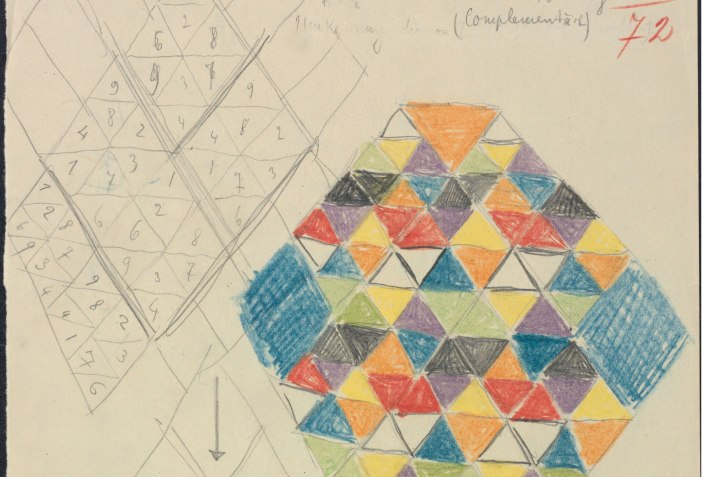
Photo: Metaculous -
Ad Parnassum (1932), one of Paul Klee's most meticulously executed paintings, is regarded as his masterpiece and the pinnacle of his pointillist aesthetic. In the Dusseldorfer era, Ad Parnassum was developed. It is one of his largest paintings, measuring 100 × 126 cm, as he typically used small formats. He blended many methods and compositional concepts in this mosaic-like piece in the pointillist style. Klee created a color field from individually stamped dots that is encircled by similarly stamped lines and resembles a pyramid as a result of his 1928–1929 tour to Egypt. A sun is visible above the "Parnassus"' roof. The location of Apollon and the Muses is indicated by the title of the image.
Although it is difficult to determine precisely what message Klee is expressing in this piece, the title may offer some guidance. Greece's Mount Parnassus is a revered summit that, according to myth, is the birthplace of writing, poetry, and learning in many ways. Perhaps Klee is alluding to the idea of study and knowledge itself amid the profound technical difficulties of his painting by titling his piece Ad Parnassum, Latin for To Parnassus.
But for many, Ad Parnassum is a unique piece of art because of its profound technical complexity. The enormous painting has stunning color patches, a sky made up of lovely blue color combinations, and a striking synergy wherein little, identical forms grow to become a part of something much larger. Ad Parnassum, the piece for which Klee is best known, is a representation of the pinnacle of his artistic career. It is a true masterpiece by Klee and represents him at his pinnacle in terms of message and skill.

Photo: Wikipedia 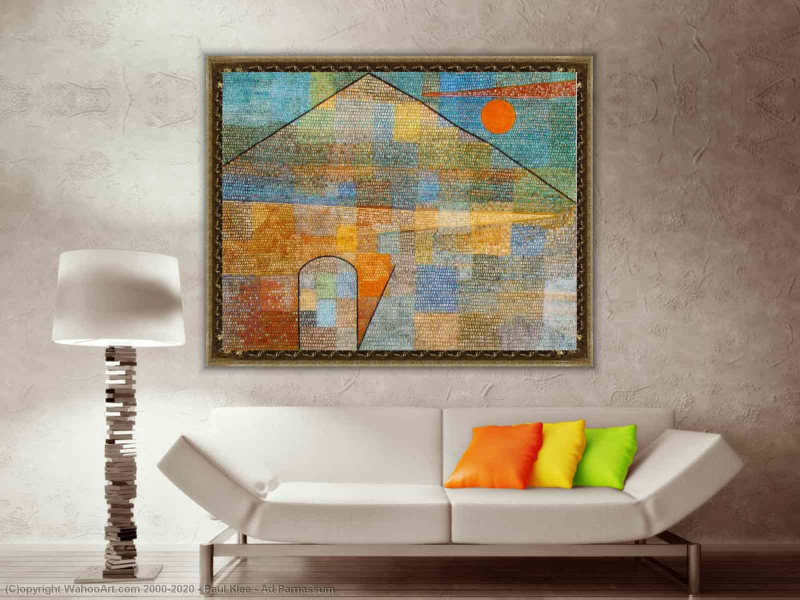
Photo: Wahoo Art








